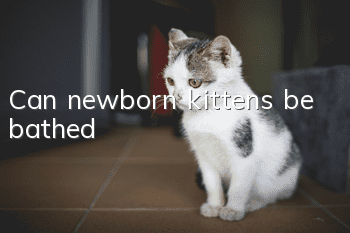How much does a Yamahara cat cost? Is it easy to raise a Yamahara cat? Living habits of Yamahara cats | Price

The mountain cat is also known as: South American lynx and Andean lynx. This cat is small in size, has a uniform body, medium-long limbs, and walking toes. The head is large and round, the snout is short, and the senses of sight, hearing, and smell are all well developed. The canine teeth and cleft teeth are extremely developed; the upper cleft teeth have three cusps, and the lower cleft teeth have two cusps; the molars are relatively degraded, and the crown diameter is smaller than the height of the lateral incisors. The fur is soft and has distinctive patterns. It has a relatively developed tail, is good at climbing and jumping, likes to live alone, and eats carnivores. It often hunts other warm-blooded animals in ambush. Lives in the Andes Mountains of South America and has no subspecies. The population is estimated to be less than 2,500.
1. Introduction to Yamahara Cat
Mountain cats like to grow in mountainous environments. Its distribution is restricted by many factors. The total effective group size is less than 2,500 individuals. Due to factors such as loss of prey, habitat or being hunted, the number has a downward trend. Mountain cats are very rare in their native areas, and more is known about them only from two specimens in museums. Their genetic diversity is low across their range, so conservation efforts can only be carried out in a limited space where the entire race is particularly valuable. Since they only live in high mountains, the valleys where humans live have become barriers, separating their groups. Their numbers are sparse, even sparser than those of the South American Savannah cat, which also lives at high altitudes.
2. Characteristics of the mountain cat
Body shape: total length 74-85cm, body length 57-64cm, tail length 35-48cm, shoulder height 36cm, weight 4kg.
Head: round head with well-developed cleft teeth. The backs of round ears are dark gray and the nose is black.
Body: The Yamato cat is medium in size. There are long and thick hairs on the upper side of the base of the tail, which seem to form a perfect circle. This ring has 6 to 9 strips and has a black tip. The long tail may be used to keep warm and wrap the body while sleeping.
Coat: Dark gray behind round ears, black nose. The fur is mainly gray in appearance, with vertical lines on both sides of the body, and the continuous stripes show brown spots. The silvery gray velvet on the back fur is extremely thick, very fine and soft, up to 5 cm long.
Tail: The long tail may be used to keep warm and wrap the body while sleeping.
3. Distribution of mountain cats
The mountain cat is one of the least known and rarest cats, and knowledge about them comes from only observations and a few specimens. They are not domesticated and are sometimes called "Andean highland cats". As the name suggests, they live in the Andes Mountains of South America, mainly in southwestern Bolivia, southern Peru, northwestern Argentina and northern Chile.
4. The breeding methods and living habits of mountain cats
The breeding season of mountain cats is between July and August. Some experts believe the breeding season may last even longer. Pups are usually born in spring or summer, with 1-2 litters per litter. Yamahara cats have keen eyesight and hearing, and are good at jumping and running between steep rock walls. They feed on rodents, birds, and reptiles. Feeds on rodents, lizards, insects, birds, etc. Compared with other cats, they may be more opportunistic and eat whatever they can catch.
5. Habitat environment of mountain cat
The wild cat inhabits rocky, arid, and sparsely vegetated areas above the tree line of the Andes, and is restricted to altitudes above 4,000 meters. The climate here is cold and windy throughout the year, and there can be snow or sleet at any time. storm. Nearly all precipitation is in the form of snow, and there is almost no vegetation, no trees and only sparse dwarf shrubs.
6. How much does a mountain cat cost?
The Yamahara cat is a very rare cat species with a very small number. According to statistics, the number is less than 2,500. The price is naturally very expensive. This cat is not suitable for domestication. Its living environment is often in mountainous and rocky places.
- What should I do if my kitten has a cold and fever?
- Can wild cats be brought home and raised?
- Is it normal for a cat to be short of breath after giving birth?
- What are the symptoms of calcium deficiency in cats?
- What should you pay attention to when a toy tiger cat gives birth?
- Is it easy to treat cat moss?
- What plants should cats not keep?
- What are the dangers of keeping cats in cages for long periods of time? What should be done for daily care of cats?
- How to effectively deworm cats? What kind of insects should be driven out?
- Why does a cat poop on the bed?



